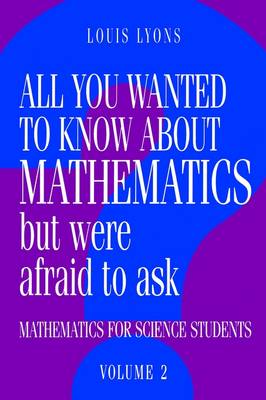All You Wanted to Know about Mathematics but Were Afraid to Ask 2 Volume Paperback Set
2 primary works
Volume 1
All You Wanted to Know about Mathematics but Were Afraid to Ask: Volume 1
by Louis Lyons
Published 5 October 1995
Why is the square root of minus one relevant to electrical circuits? Can geometry be used to solve problems in the physical sciences? How could you help a being on a distant planet distinguish left and right? With a clear understanding of mathematics, these questions can be solved. But in many textbooks, mathematical proofs and techniques cloud the issue of understanding the physical principles. This book shows why particular techniques are useful by providing clear and full explanations. The aim is to convey a deeper appreciation of mathematical methods that are applicable to physics and engineering. A wide range of real physical problems are discussed. The author has thirty years experience of teaching mathematics to undergraduates. This book is based on the explanations he has found to be most successful in teaching.
Volume 2
All You Wanted to Know about Mathematics but Were Afraid to Ask
by Louis Lyons
Published 30 April 1998
This book, first published in 1998, is the second in a two volume work and introduces integral and differential calculus, waves, matrices, and eigenvectors for undergraduates in physics and engineering. Together, the two volumes cover all the mathematics needed for an introductory course in the physical sciences. The approach taken is to learn through understanding real examples, showing mathematics as a tool for understanding physical systems and their behaviour. The aim is to make the student feel at home with real problems by creating a toolkit through a wide range of examples. The traditional approach of teaching theory for its own sake is not used in this course. Dr. Lyons brings a wealth of teaching experience to this refreshing textbook on the fundamentals of mathematics for physics and engineering.

